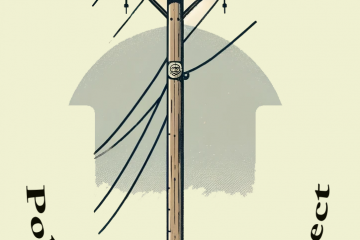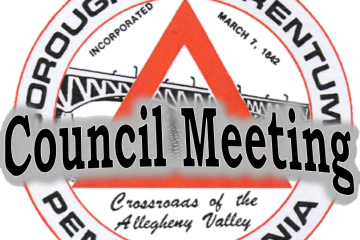How Can We Help?
§ 265-1003 CRITERIA
- Illumination levels.
- Lighting, where required or permitted by this section, shall have intensities and uniformity ratios in accordance with the current recommended practices of the Illuminating Engineering Society of North America (IESNA) as contained in the IESNA Lighting Handbook, 9th Edition.
- Examples of intensities for typical outdoor applications, as extracted from the 9th Edition of the Lighting Handbook, are presented below:
Use/Task Maintained Footcandles Uniformity Ratio – Average : Minimum Streets, local residential 0.4 Avg. 6:1 Streets, local commercial 0.9 Avg. 6:1 Parking, residential, multi-family Low vehicular/pedestrian activity 0.2 Min. 4:1 Medium vehicular/pedestrian activity 0.6 Min. 4:1 Parking, industrial/commercial/institutional/municipal: High activity, e.g., regional shopping centers/fast food facilities, major civic/cultural events and private recreational activities 0.9 Min. 4:1 Medium activity, e.g. community shopping centers, office parks, hospitals, commuter lots 0.6 Min. 4:1 Low activity, e.g., neighborhood shopping, industrial employee parking, schools, church parking. 0.2 Min. 4:1 Walkways and Bikeways 0.5 Avg. 5:1 Building entrances 5.0 Avg. – Notes: Illumination levels are maintained horizontal footcandles on the task, e.g., pavement or area surface. Uniformity ratios dictate that average illuminance values shall not exceed minimum values by more than the product of the minimum value and the specified ratio, e.g., for commercial parking high activity, the average footcandles shall not be in excess of 3.6, i.e. (0.9 x 4).
- Lighting fixture design.
- For lighting of horizontal surfaces such as roadways, pathways and parking areas, fixtures shall meet IESNA full-cutoff criteria.
- For lighting of nonhorizontal surfaces such as the use of floodlighting, spotlighting, wall-mounted fixtures, decorative globes and other fixtures not meeting IESNA full-cutoff criteria shall be remitted only with glare control and notwithstanding the required uniformity ratio.
- Fixtures shall be equipped with or be capable of being back-fitted with tight-directing devices such as shields, visors or hoods when necessary to redirect offending light distribution.
- Control of glare, light pollution and light trespass.
- All outdoor lighting whether or not required by this chapter, on private, residential, commercial, industrial municipal, educational or institutional property, shall be aimed, located, designed, fitted and maintained, so as not to create glare, light pollution and light trespass.
- Lighted signs advertising individual business and combinations of businesses (as in a shopping center) may remain on until 15 minutes after closing of the business or combination of businesses and then shall be extinguished.
- Entrance signs to residential developments and to business parks or shopping centers may remain on throughout the night for identification purposes for emergency vehicles.
- Unless a period of outdoor lighting extending throughout the night for safety or security purposes, lighting shall be controlled by automatic switching devices, such as time clocks or combination motion detectors and photocells, to permit extinguishing lighting between 11:00 p.m. and dawn.
- Vegetation screens shall not be employed to serve as the primary means for controlling glare. Rather, glare control shall be achieved primarily through the use of such means as cutoff fixtures, shields and baffles, and appropriate application of fixture mounting height, wattage, aiming angle and fixture placement.
- The intensity of illumination projected onto a residential use from another property shall not exceed 0.1 vertical footcandle, measured at 30 inches above the ground at the property line.
- Externally illuminated signs shall be lighted by fixtures mounted at the top of the sign and aimed downward.
- Except as otherwise permitted in this section, fixtures meeting IESNA full-cutoff criteria shall not be mounted in excess of 20 feet above finished grade. Fixtures not meeting IESNA full-cutoff criteria shall not be mounted in excess of 16 feet above grade except as specifically approved by the Borough Council.
- Fixtures used for architectural lighting, e.g., facade, fountain, feature and landscape lighting, shall be designed, fitted and aimed so as not to project their output beyond the objects intended to be illuminated.
- The approval of security or flood lighting which exceeds the uniformity ratios otherwise authorized in a particular use may be granted by Council as a conditional use with the following criteria:
- Floodlights and spotlights, when permitted, shall be so installed or aimed that they do not project their output into the windows of neighboring residences, adjacent uses, directly skyward or onto a roadway.
- All-night safety or security lighting shall be permitted, but the light-intensity levels shall not exceed 25% of the levels normally permitted for the use by this section.
- The nature or historic functioning of a particular establishment type shall be demonstrated to require greater security for the safety of employees and patrons and/or security of merchandise, products, or other items integral to the establishment’s functionality and stored on-site.
- The departure from the uniformity ratio typically required for a certain class and intensity of establishment shall be the minimum required for security related purposes.
- Installation
- Electrical feeds for lighting standards shall be run underground, not overhead.
- Lighting standards to the rear of the parking spaces shall be placed a minimum of five feet outside paved areas, curbs or tire stops, or be suitably protected by other means approved by the Borough Council.
- Maintenance. Lighting fixtures and ancillary equipment shall be maintained so as always to meet the requirements of this section.


